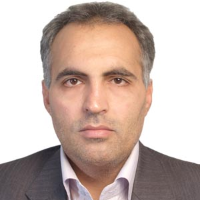Study of Stringed-bow instruments in the Safavid and Gurkanian eras with a glance at miniature
India and Iran with an ancient civilization and long-standing cultural history have been in contact with each other in various forms since ancient times until the Mughals of India and the Safavid dynasty. These common roots and mutual contacts caused cultural exchange between the two nations.After creation of powerful Mughal Empire, the relations between Iran and India entered a new phase. The leaders of two countries that had become very close to each other, started to cooperate and this communication penetrated in depths of people's lives. The most important manifestations of cultural influence can be seen in the development of Persian language and literature in India and Indo-Iranian art such as painting, music and architecture. Art painting established the highest intercourse between these two neighbors. Music was also an important artistic and cultural element that connected these two countries in this era, "existing parts of rhyme in the Rig Veda, Avesta, music and popular dance among Indians that performed in religious ceremonies, in some ways shows the existence and importance of this art among the Aryan tribes .. So that the Hindi classical music was connected with Iranian-Islamic culture and got a profound influence from it. The revolution that happened in this music was born from Iranian music influence in this subcontinent that "Amir Khusrau Dehlavī " is considered as a leader of this movement.In the era of two great and powerful empires, Safavid and Gorkani, cultural interactions between India and Iran affected on instruments development. String instruments with bow are a large ensemble of string instruments that make sound by using bow or ricochet and they have been used in Iran and India since the ancient times. This research has attempted to study different types of instruments, musicians’ places, the musician status of string instruments toward the musician status of other instruments (such as tabor, lute, trombone, daf, dayereh) and also their status in empires of safavid and Gorkani; this study also answers to this fundamental question: whether the immigration of Iranian artists and musicians to India made difference in the way and diversity of using string instruments in different parties. In the illustrated samples of this era which has been studied, using string instruments with bow has been numerous in parties but not as numerous as using of string instruments without bow.According to the studied works, it may say that although Iranian art had a great influence on Indian art but it could not have a successful presence in the field of using string instruments with bow and it just suffice to add Iranian fiddle to the collection of this instruments in that country and perhaps great variety of string instruments types in India in Gurkani era toward Safavid era has been the most important reason of it.This research has been done through comparative-analytic method and library-documentary data collection method. It should be noted that the references of this paper contain the figures of books and albums as well as different wall figures.
-
نقش فضای سبز محیط آموزشی در ارتقاء یادگیری دانش آموزان هنرستان های دخترانه (مطالعه موردی: دانش آموزان هنرستان دخترانه کتابچی کاشان)
سارا نجفی، *، محمدرضا حاتمیان
نشریه معماری شناسی، زمستان 1402 -
Improving housing security based on Analyzing visual access indicators in historical houses of Bushehr
Seyedeh Maryam Sajadi, Ahmad Danaeinia *,
Journal of Architect, Urban Design & Urban Planning,



